11 Essential Kitchen Tools, Plus 6 Splurges

There are a few basic kitchen tools that you’ll need for quick and healthy meal prep. A good, heavy skillet, for example, makes the difference between a perfectly seared, juicy chicken breast and a pale, dried-out chunk of cardboard.
So here’s a list of “Must Haves” along with a few specialty gadgets that will make your cooking life a whole lot easier. And a little tip: Always buy the best quality equipment you can afford. That way you’ll buy the thing once, and not over and over again each time it breaks!
The Basics
Having these tools on hand will save a run to the store when a recipe calls for them.
1. Good knives
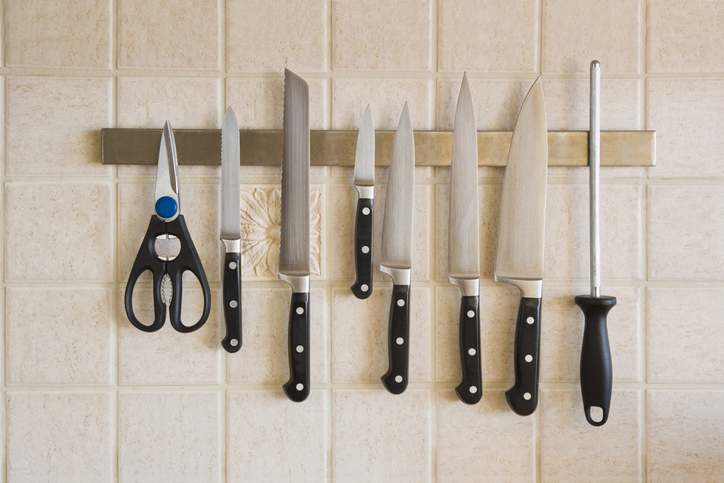
Paring, chef’s, and serrated knives are all you really need.
- A paring knife is a small, light knife good for slicing fruits and other foods with small, fine shapes and sizes.
- A chef’s knife is the workhorse of kitchen knives. It’s the big one in the knife block, usually about 8 inches long. It’s thick enough that when the blade is perpendicular to the cutting board, your fingers fit comfortably around the handle of the knife with some air between your knuckles and the board.
- A serrated knife — the kind that looks like it has little teeth — is good for bread, and also perfect for slicing tomatoes.
How to pick
With knives, it’s especially important to buy the best possible quality — especially in the case of the chef’s knife. Cheap knives mangle food, and they’re dangerous. If you can only afford one or you plan to build your collection gradually, start with the chef’s knife.
How to maintain
“If you purchase good quality knives they will last your lifetime and then some — if you take care of them,” says chef Meg Galvin, C.E.C., W.M.C.S., an advisor in the culinary arts program at Cincinnati State in Ohio. “Never place knives in the dishwasher. Hand wash and dry and store separately in a butchers block or covered with a sleeve, never tossed in drawer.”
To keep them slicing and dicing well for you, be sure to run knives over a honing steel — also called a sharpening steel, even though it doesn’t actually sharpen anything — before each use. The microscopic teeth along the long rod will help keep the edge of the blade straight, allowing for better cuts in-between a major sharpening. Galvin suggests getting your knives professionally sharpened a couple times a year.
2. A basic set of pots
A soup pot, a medium-sized pot, and a small saucepan.
- The soup pot should be plenty big enough for a batch of chicken stock — about 8 quarts.
- A 3- or 4-quart pot is good for smaller batches of soups and stews.
- A small saucepan is indispensable for making single or small serving recipes, as well as reheating leftovers (this is often quicker than microwaving).
How to pick
Choose stainless steel rather than aluminum, because the aluminum in cookware can leach into your food. The heavier the bottom, the more even the heat, and the less likely your food is to scorch.
3. At least one skillet
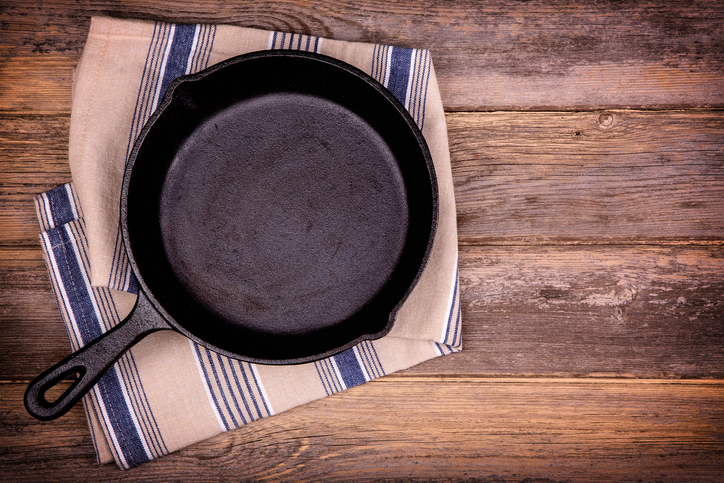
We hate to be the bearer of bad news, but if your kitchen is stocked with old nonstick pans, or the inexpensive ones that are sold everywhere, it’s time to get rid of them. They can’t be used for high-heat cooking or put into the oven. That’s because the coating, a chemical called polytetrafluoroethylene (PTFE), releases toxic fumes that may be carcinogenic to humans, according to Consumer Reports and the Environmental Work Group.
Plus, when the nonstick coating starts to peel (and it will), those little flakes get cooked right into your food. Then the compromised surface of the pan will heat unevenly, which creates more toxic emissions. The Green Guide recommends that you replace nonstick cookware every two years, even if it’s not flaking, because the surface begins to degrade after that. Suddenly, these cheap nonstick pans aren’t such a bargain.
How to pick
There are better nonstick choices. One is cast iron. A well-seasoned cast iron skillet is a pleasure to cook with because it heats evenly and you can brown things to a delicious, rich flavor and texture. You may also want to give ceramic nonstick skillets a try. Scanpan is one brand that has a ceramic-based coating that does not break down with high heat.
Whether you choose ceramic-coated or cast iron, be sure to get skillets that are oven safe, without plastic parts. That way they can pull double duty for oven roasting and baking.
4. Strainers
A nesting set of three is ideal. If you need to stick to just one, get a big one with fine mesh, so that it’s good for rinsing everything from pasta to salad greens to fruit. A strainer with a base can also serve double duty as a colander.
5. A set of spoons
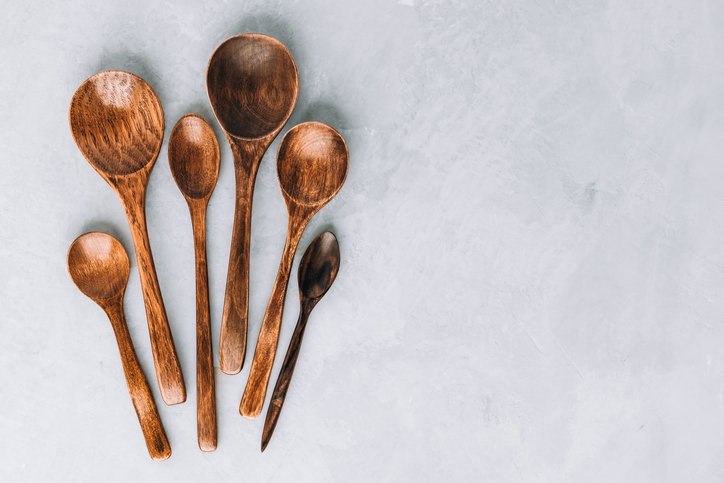
You’ll want to get a set of mixing and cooking spoons, preferably made of wood or bamboo. Get a couple of plain and slotted spoons of different sizes, and also a couple that are flat-topped like spatulas. Keep these in a crock by the stove, along with a whisk and a set of tongs.
How to maintain
For wooden spatulas and spoons, be sure to keep them out of the dishwasher as the heat and soaking wash can cause them to split and crack much faster than if you hand wash them each time after use.
As far as maintaining their sturdiness and integrity over the long term, you should treat them with food-grade mineral oil. This oil is related to petroleum jelly and will help add moisture and prevent the absorption of odors from food.
“About every 6 months give your wooden spoons and cutting board a drink of mineral oil,” says Galvin. “Simply soak a towel in the oil and rub over the board or spoons.”
6. Peeler
A vegetable peeler is pretty self explanatory — use it to peel vegetables — but it’s also perfect for slicing hard and semi-hard cheeses. Get one with a heavy, comfortable handle, and make sure it’s stainless steel and it’ll fine for the dishwasher and to toss in the drawer.
7. Measuring cups and spoons
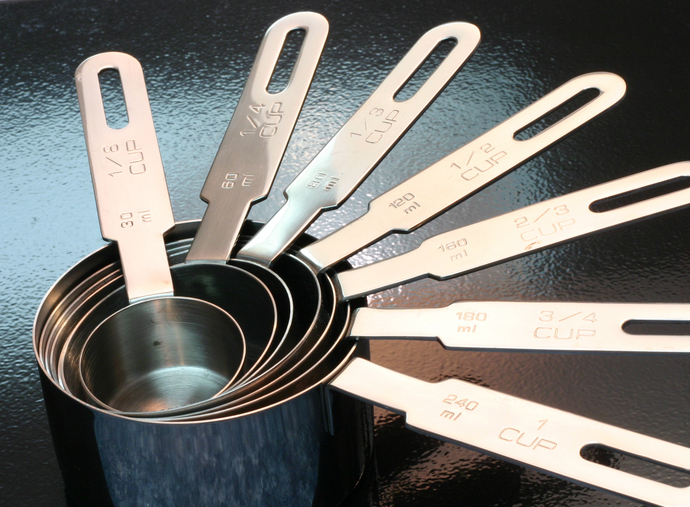
Get sturdy, heavy metal spoons — not plastic ones, which are not as sturdy and can warp or snap in the dishwasher. Or if you accidentally drop one in the disposal and turn it on…pick one or two Pyrex measuring cups with pour spouts, along with a set of metal cups for dry measures.
8. Cutting boards
Keep separate boards for vegetables, meats, and fish. It’s important to keep raw vegetables away from raw meats and fish to avoid contamination, particularly when you’re making salad or some other non-cooked vegetable dish.
How to pick: We like eco-friendly bamboo boards. They have the satisfying feel of wood chopping boards, but they are harder and a little heavier, making for a very sturdy, non-warping cutting surface. Plastic cutting boards aren’t ideal, but if you do use them, make sure to replace them every couple years or so as they develop deeper cuts that bacteria can hide in.
Wash your board with hot water and soap immediately after each use, and don’t leave it to soak. The board could warp and split. When chopping raw meat, wash your board extra well, or disinfect it with 3% hydrogen peroxide, vinegar, or diluted bleach — about one teaspoon per quart of water.
9. Box grater
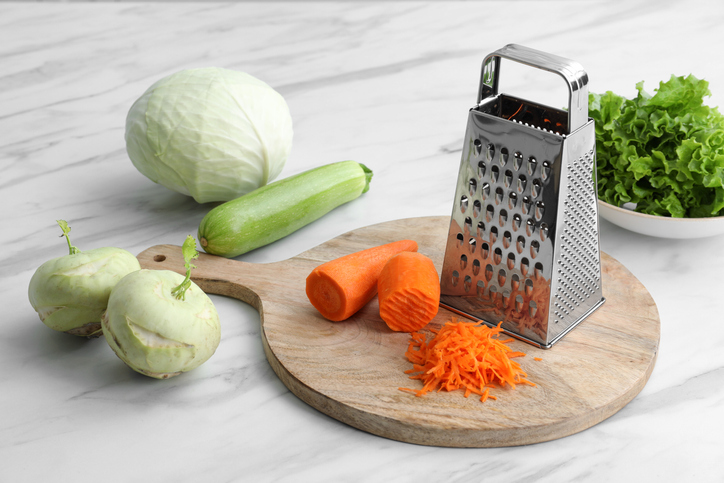
You may not know it yet, but you can use a box grater for much more than shredding cheese for nachos! The simple addition of a bit of citrus or ginger zest can amp up the deliciousness of many simple dishes. [Editor’s note: If you have a knack for bloodying your knuckles on your grater, pick up a handheld microplane zester instead.]
10. Can opener
Get an old-fashioned Swingline, or another manual can opener with some heft.
11. A table and chairs
It might seem overstated, but whether you’re grabbing a quick snack or joining the family for the evening meal, it is important to sit down and eat. Pay attention to what’s on your plate. Breathe. Chew carefully. Taste your food, and enjoy it. You can work out quick, and you can cook a great meal quick — but when it comes time to eat it, slow down. Savor. Take a little time to enjoy the fruits of your labor. This is the payoff, right here.
The Fancy Stuff
You don’t need the following kitchen gadgets, but if you’re so inclined, they’ll make it a snap to put great food on the table fast.
1. Citrus juicer
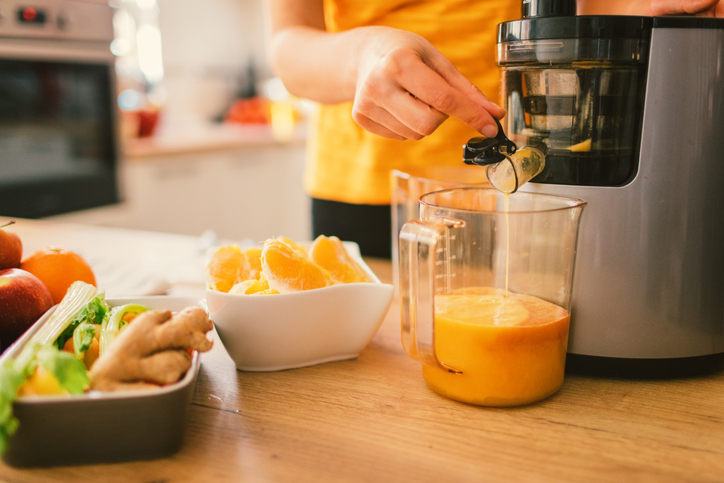
With one of these, you can transform a whole grapefruit to a glass of fresh juice in minutes flat. It’s a little more effort to juice a grapefruit than it is to pour a glass from a carton, but, honestly, not a lot. The big difference is in the flavor — fresh-squeezed is incomparably better than store-bought — and in the health benefits. Freshly squeezed juice retains more of its vitamins and minerals, which can be lost in the factory juicing process. Choose an electric citrus juicer, or go with a manual one for a great way to squeeze more physical exercise into your day!
2. Immersion blender
With one of these, you can make thick, creamy vegetable soups that taste decadent, but are actually very healthy. And with a hand blender, you can make blended soups in one pot, from start to finish. That’s a lot less cleanup than a traditional blender. The immersion blender also gives you more control over the consistency of your soup than a traditional blender. You can leave a little chunkiness to the soup pot, or puree all the way down to liquid.
3. An extra coffee grinder
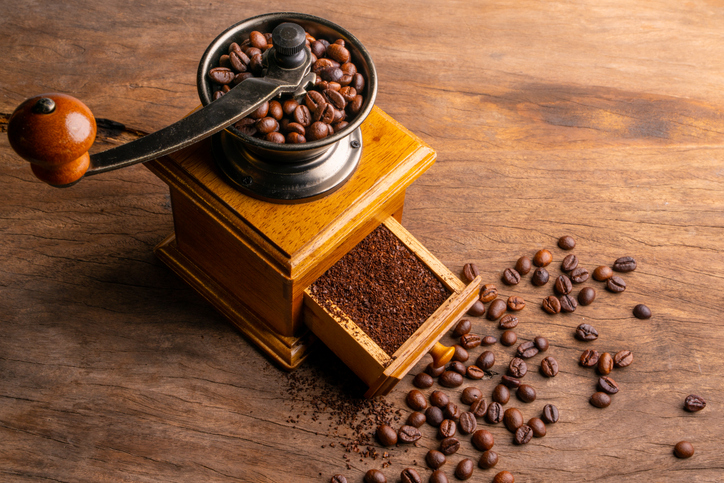
Well-spiced food needs less fat and salt to taste good. And there’s nothing like the taste of freshly ground spices. The stuff you buy pre-ground is less potent, and sometimes tastes like dust. It’s easy to grind whole spices in small quantities as you need them, if you have a spare grinder. Don’t use your actual coffee grinder, unless you want your food to taste a bit like coffee, and your coffee to taste a bit like…cumin?
4. Garlic press
Garlic is a healthy and versatile ingredient, and may become a staple in your kitchen. You probably have one somewhere in the utensil drawer, but a bad garlic press is worse than none at all. It’s ineffective and annoying. And no one needs more stress when cooking.
How to pick
When shopping for a garlic press, look for one that’s heavy — not one of those lightweight aluminum ones. It should have a comfortable handle, preferably padded in rubber. Also look for a set of teeth on the reverse side that can be pushed through the little holes of the press to help clean them out.
5. Salad spinner
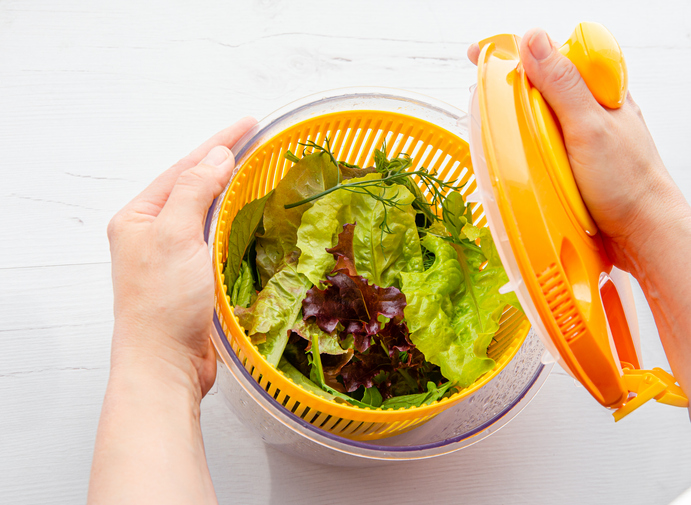
Keep a salad spinner full of greens in the fridge. Even when you buy the pre-mixed, pre-washed stuff, it’s still a good idea to rinse greens right before serving them. When it’s time to put together a salad or a bed of greens for a meal, you can just haul the spinner out of the fridge, give the greens a fresh rinse, and spin them dry. Pull out as much as you want, then stick the spinner back in the fridge for next time. (If you do this, make sure you drain and dry the spinner’s bowl each time so that the basket of greens isn’t sitting in a puddle of water.)
How to pick
Get a spinner with some weight to it — the lightweight ones break easily. And stay away from the string-pull type. They tend to break more easily, and when it’s in constant use, it can be unsanitary.
6. Slow cooker
Sometimes the fastest way to get dinner on the table is to cook it slowly. A modest cut of meat and a few vegetables thrown into the slow cooker in the morning transform into a hearty, healthy, meltingly delicious stew — for practically zero effort on your part. It’s a beautiful thing, coming home after a long day to find the house smelling like your personal chef has been hard at work in the kitchen.
